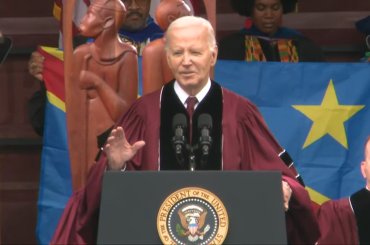The Gaza Strip is an area where everyone is connected, where people support each other in happy and sad events.
Everywhere in the world, misery brings out the deepest human feelings, so it’s common to see a mother cry from the despair of losing her beloved child. It is less common to see a mother smile and ululate at her son’s funeral, but in Gaza when a woman’s son is a martyr, especially if he is a fighter, she does those very things as he is taken to his final resting place.
It would be wrong to believe that the mother, who just received the news that her beloved son who fights the occupation is killed, is happy. But when we look at her, it’s hard to see any weakness or tears on her face. Even the people who come to support her show pride rather than sorrow. Other women affectionately call her “Um Al-Shahid,” the mother of the martyr in Arabic.
Funerals of martyrs are also different from other funerals. As the procession unfolds, there is heavy gunfire in the air from his comrades in the struggle and patriotic chants playing loud on the speakers following the crowds.
In Gaza, fighters bring glory to everyone. When they are killed, people feel pride when they say that they knew them or were friends of theirs or even had a single small chat with them. All these memories become powerful feelings of pride. For the family, especially parents, they become symbols of sacrifice, and role models for others, who tell them they wish to be like their sons.
I do not know the circumstances of fighters in the West Bank, but I surely know about fighters in Gaza. During the past two months, I have followed these resistance fighters in an attempt to interview members of the various armed Palestinian factions in Gaza for a story on the history and current moment of Gaza’s armed resistance. In order to present our audiences with diverse points of view, I have sought out fighters affiliated with the Hamas military wing, the Islamic Jihad, and the leftist military wing of the Popular Front for Liberation of Palestine.
Fighters in Gaza are not known to the public. They make sure that their identities are kept secret – they wear full masks over their faces, or “lathma” in Arabic, the mark of a fighter. The identity of the fighter is revealed only when he dies fighting. It is only then that people know about him and get the chance to see who he was.
What is special about Gaza fighters is that many of them also have a life outside of resistance. They are educated, have higher education academic degrees, and some have jobs in different civil sectors. They are not only fighters who deal with guns. They start families, have kids, and build homes. They are not any different from any other people living in or outside Gaza, except that they see their duty as fighting the Israeli occupation because they believe that only resistance can get back their lands and home.
I have met two factions so far, and I’m still waiting to meet another two. When I met those fighters, I could understand why they bring glory to their families.
Despite the intimidating circumstances under which I conducted the interviews, like meeting after midnight in the dark in locations far away from any residential areas, listening to them fills you with emotion.
They are confident, powerful, faithful, fearless, and believers, and it’s impossible to feel anything when they’re around except pride.
When you listen to their defense and explanation of why they fight, you understand their reasons and see that they are serious and noble. You can also believe that someday they will reach their goal and free Palestine, because people who are fighting in such conditions against one of the most powerful armies in the world are true heroes.


